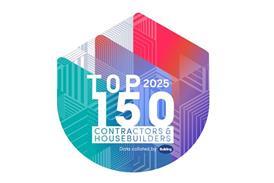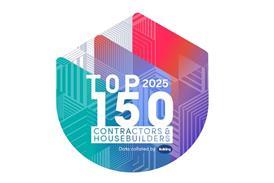In theory, knowledge management does this by giving them quicker and more reliable access to information. It should improve communication and cut overheads.
What tools are required to achieve this? Essentially, effective knowledge management needs suitable IT hardware and software, a critical mass of information in electronic form, and a supportive organisational culture and procedures.
However, knowledge management isn't just about more information. It's about better information – information that genuinely helps make better decisions and better use of time.
Knowledge is the information you have in your head – the basis for every decision you make. What you don't know, you can't take into account. You certainly can't remember everything that might be relevant from a book you read as a student or what a client said in a letter two months ago.
There is also much more information that you don't know exists: it might be in a colleague's project files, a book in the office library, in a BRE technical report, some Italian product literature or in a paper from an obscure conference.
What knowledge management aims to do is bring information like this into use by putting it on your desk, when you need it, without you having to know where it was.
Before knowledge management, only the most senior staff knew what projects had been done and who knew what. If a senior consultant left, much of their knowledge left with them. Even if information was documented in reports, people quickly forgot it was there.
Other professions have developed ways to improve what one might term the corporate memory: the intellectual knowledge base of information. Most medical practices already manage prescriptions and some types of patient records electronically. Doctors can call up the results of clinical trials from the on-line Cochrane Library while they are talking to patients, to make sure they prescribe the most suitable drugs. The Department of Health intends to eliminate all paper records in the health service by 2005.
Barristers using Butterworths' on-line database can review every legal act and statutory instrument in force in England and Wales, plus nearly 800 years' worth of UK case law in the 50 volumes of Halsbury's Laws Direct. Rather than rely on keywords, this uses intelligent software to search by concept and linguistic patterns, and copes happily with changes in legal language over the centuries.
As another example, the Institute of Electrical Engineers and the Institute of Electrical and Electronic Engineers have put all their books, journals and conference proceedings published since 1988 onto CD-Rom.
What do small companies do?
The Department of the Environment, Transport and the Regions (DETR) has funded a research project to identify how knowledge management can aid small and medium-sized design practices. This looked at the knowledge needs of firms with up to 50 staff, but focused particularly on firms with up to 10 employees.
The study revealed that human memory and project documents are universally regarded as the most vital information resources in design practice. Official publications, product literature, journals, on-line information services and other reference sources trail well behind.
Electronic information use is relatively small, despite the benefits of better management of project documents and other internal information, and better communications with colleagues and clients.
That said, two case studies demonstrate clear benefits of the electronic revolution. Stephen Brown, a director of The Charter Partnership in Cheltenham, estimates that each member of his firm spends 20 minutes a day searching for internal information like project correspondence. Even a simple electronic system saving half of that time could release the equivalent of two full-time professionals for more productive work.
Swindon-based consulting engineer Halcrow Gilbert Associates (HGa) has largely abandoned paper project records. By shredding incoming correspondence when projects are finished, the firm has substantially reduced its storage needs. When a client rings managing director Terence Tovey, he says he can have HGa's last letter on-screen before the caller has finished giving him the reference.
Both these organisations are discovering that electronic information has important access, security and portability advantages over paper. Documents are always available (and can be used by several people at once), and keeping complete copies elsewhere largely eliminates the risk of any loss through, say, fire or theft.
Knowledge management tools
The key tools are electronic document management and e-mail. Interviews with senior practitioners showed that an electronic document management system for a medium-sized design office needs to be simple to install, use and maintain. It also needs to be affordable, in both software and staff time needed for implementation and training (preferably under £100 per user for software), capable of DIY installation, and have intuitive user interfaces. In addition, it needs to be flexible for the future.
From a user's point of view, the defining characteristic of a system is how easily you can find the information you want. There are four main search strategies whether documents are on paper or electronic:
- by object – such as looking for a specific document identifiable by a unique characteristic such as its title or reference number;
- by category – browsing through a catalogue of themes, like 'Legionnaires' disease';
Well managed knowledge can help most professionals do a better job
- by description – using a database of 'metadata' such as author names or creation dates, to identify documents that fit a specific description (see table 1);
- by content – searching the full text of documents to find all those that contain selected text, such as 'granite', 'cladding' and 'London'.
Searching for objects
With paper, object searches normally rely on physical location. In principle, documents can be accessed using a categorised index or a database relying on metadata.
In practice, though, storage is usually arranged in basic categories, making indexes and databases (when they exist) redundant in terms of ordinary day-to-day work.
The principles of paper management are identical for the electronic environment, at least with short documents like letters. The essential difference between the two is that, while the initial search is faster on a desktop pc, flicking through a series of documents is slower when they have to be individually loaded into applications like Word or Excel.
File viewing software solves this problem. Object search is easy and cheap to implement and use, and it makes the best basis for electronic management of project documents in most practices.
Searching by category
The categories used for project filing can seem so self-evident that they are hardly recognised as such. There are only a few 'natural' category schemes for contractual documents, while nearly all documents have an obvious and unique home in the system, and the categories are usually used simply as a starting point.
It is not always so obvious how reference documents should be categorised. Design office libraries often use CI/SfB, but many people use bespoke systems because categories need to match users' needs in order to work well.
There is one fundamental difference between electronic and paper libraries. In the electronic office, a single document can appear in several categories at once, and new categories can easily be set up to meet special short-term needs.
This greatly enhances the power of category-based systems as a working tool for accessing reference material. Such catalogues are an invaluable part of an EDM strategy, and they can be implemented easily at zero cost.
Searching by description
Search by description is probably the least useful strategy in a design office. While metadata is superfluous for most contractual documents like letters, it can be useful for reference documents – documents that are actually little used in most design offices.
However, while paper-based keyword systems are difficult and expensive to maintain, electronic documentation usually generates basic metadata automatically – the creation date and author's name, for example. It may also offer the advantages of cross-project searching and full-text content searching.
Searching for content
With paper, searching content directly means using an index or just turning over pages – both of which take time. Electronic systems can be incomparably more powerful: a search engine like Alta Vista or Excite can interrogate every word in millions of documents in seconds.
The same kind of facility can be provided in an electronic office, enabling full-text content searching of project files and reference collections whether they are wordprocessor documents, spreadsheets or drawings.
However, content searching isn't a panacea for reference collections. Some skill is necessary and a search may throw up an inconveniently long hit list, or miss some documents.
Putting it all together
There is a fuzzy boundary between search strategies. Most well-designed filing systems support all four at some level: documents have unique references, they are filed in at least basic categories, folder titles are often descriptive, and the last step in getting information is always to read it – a content search.
Source
Building Sustainable Design




















